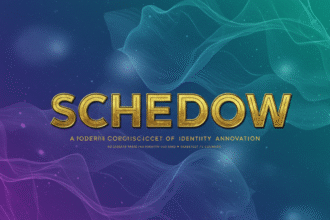Introduction to Assimilasjon
Assimilasjon is a concept that sparks curiosity and debate. It’s a term that evokes images of cultures blending, identities shifting, and societies evolving. But what does it really mean? At its core, assimilasjon describes the process by which individuals or groups adopt the customs, values, and behaviors of another culture—often leading to significant changes in their original identity.
As our world becomes increasingly interconnected, understanding assimilasjon has never been more crucial. It shapes our communities and influences how we interact with one another. In this blog post, we’ll dive deep into the different types of assimilasjon, explore real-world examples from various cultures and societies, examine both its benefits and drawbacks, take a closer look at Norway’s unique approach to assimilation, and hear personal stories from those who have experienced it firsthand. Join us as we navigate this complex topic!
The Different Types of Assimilasjon
Assimilasjon can manifest in various forms, each with its own characteristics. One type is linguistic assimilation, where individuals adopt a new language while losing their native tongue. This often reflects the influence of dominant cultures.
Cultural assimilation occurs when people embrace new customs and traditions. It leads to blending practices from different backgrounds, enriching societies but sometimes diluting original identities.
Social assimilation focuses on integration into social groups. Individuals may shift their behaviors and norms to fit into mainstream society, building connections that facilitate acceptance.
Structural assimilation involves changes within institutions like schools or workplaces. It promotes equal opportunities for all individuals regardless of background, yet it can also create tension if not handled sensitively.
Each type plays a significant role in shaping personal experiences and societal dynamics around the world. Understanding these nuances helps us appreciate the complexities involved in assimilasjon processes.
Examples of Assimilasjon in Culture and Society
Assimilasjon manifests in various ways within culture and society. One notable example is language adoption. Immigrants often learn the dominant language of their new country, gradually shifting from their native tongue to better integrate.
Culinary traditions also showcase assimilasjon. For instance, many cultures blend traditional recipes with local ingredients, creating unique dishes that reflect both heritage and newfound influences.
In education, students from diverse backgrounds may adopt aspects of the prevailing culture while retaining elements of their own identity. Schools often celebrate multicultural events that highlight this blending process.
Art and music are further realms where assimilasjon thrives. Artists might fuse styles or genres to create something entirely new, reflecting a shared experience among different cultural groups.
These examples illustrate how assimilasjon shapes our everyday lives by influencing customs, practices, and social interactions across communities.
Benefits and Drawbacks of Assimilasjon
Assimilasjon can lead to a stronger sense of unity within a society. When diverse groups adopt common cultural practices, it fosters social cohesion. This shared identity often enhances communication and collaboration among individuals.
On the other hand, assimilation can erode distinct cultural identities. Minority groups may feel pressured to abandon their traditions and languages in favor of dominant norms. This loss creates tension between preserving heritage and adapting to mainstream culture.
Economic benefits also emerge from assimilasjon as newcomers adapt quickly to job markets. Their skills can fill gaps in labor demand, boosting local economies.
However, this economic integration might come at a cost. Many immigrants face discrimination or underemployment despite their contributions. The challenge is finding balance; societies must support diversity while encouraging inclusivity through assimilation strategies that honor various backgrounds.
Case Study: Norway’s Approach to Assimilation
Norway has taken a distinctive approach to assimilasjon, especially in recent years. The country emphasizes integration while respecting cultural diversity. This balance aims to create a cohesive society that values both Norwegian traditions and immigrant backgrounds.
One significant initiative is the introduction of language courses for newcomers. These programs are designed not just to teach Norwegian but also to foster understanding of local customs. This helps immigrants navigate daily life more easily.
Additionally, Norway’s welfare system plays a crucial role in assimilation efforts. It provides support for education, healthcare, and housing—essential elements that help individuals feel secure as they adapt.
However, challenges persist. Some critics argue that the pressure to conform can lead to identity loss among minorities. Balancing national identity with multiculturalism remains an ongoing dialogue within Norway’s diverse communities.
Personal Experiences with Assimilation
Assimilation is a deeply personal journey for many. I recall my friend migrating from a small village to the bustling city. The initial excitement was palpable, but soon she faced challenges.
Navigating cultural differences became overwhelming. Language barriers often left her feeling isolated in social gatherings. Yet, she embraced new customs with determination.
In another instance, a colleague shared his family’s struggle to adapt while preserving their heritage. They celebrated traditional holidays at home but participated in local festivities too. This blend created a unique identity that honored both worlds.
Some find solace in community groups that celebrate diversity, fostering connections through shared experiences and stories of adaptation. Others grapple with the pressure to conform fully, leading to internal conflict over lost traditions.
These narratives highlight how assimilation impacts individuals differently—each story adding depth to our understanding of this complex process.
Conclusion: Understanding the Complexities of Assimilation in Today’s World
Assimilation presents a multifaceted landscape that is both rich and nuanced. It encompasses various types, such as cultural, social, and linguistic assimilation, each playing a significant role in how individuals and communities interact within society. The examples of assimilation we encounter in culture highlight its dynamic nature—the blending of traditions often leads to unique societal developments.
While there are undeniable benefits associated with assimilation—like increased social cohesion and economic opportunities—there are also drawbacks that cannot be overlooked. Loss of cultural identity can create feelings of alienation among those who assimilate. This duality makes the topic even more compelling.
Looking at specific case studies like Norway provides insightful perspectives on how different societies navigate the complexities surrounding this process. Personal experiences add another layer to our understanding; stories from individuals reveal the emotional dimensions of their journeys through assimilation.
Understanding these complexities requires an open mind. We must acknowledge the challenges while appreciating the potential for growth that comes from diverse interactions in our ever-evolving world. Assimilation will continue to shape societies globally, prompting ongoing discussions about identity, belonging, and community dynamics as we move forward together.

















